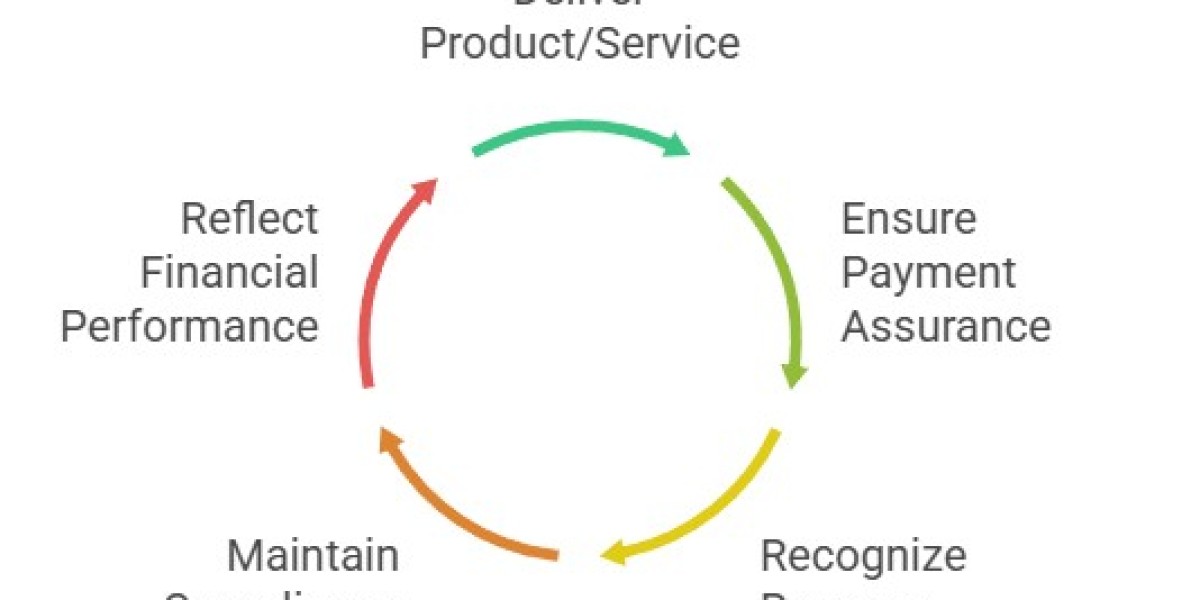Revenue recognition might sound like a technical accounting term, but it plays a central role in how companies report their income. For businesses, especially those growing or transitioning to new markets, understanding revenue recognition is essential for staying compliant, maintaining trust with stakeholders, and ensuring accurate financial reporting.
Whether you're a startup founder, a CFO, or a finance enthusiast, this guide will walk you through the essentials of revenue recognition, its principles, and what recent changes you should be aware of.
What Is Revenue Recognition?
Revenue recognition refers to the accounting principle that dictates when revenue should be recorded in the financial statements. It answers a simple but important question:
When has a business actually “earned” its revenue?
Under traditional accounting practices, revenue is not just recorded when cash is received but when it is earned and realizable. This is particularly important for companies that offer subscription-based services, long-term contracts, or deferred payments.
Why Is Revenue Recognition Important?
The way revenue is recognized affects everything from income statements to tax obligations. Here’s why it matters:
- Transparency: Investors and regulators rely on accurate financial statements.
- Comparability: Standardized rules help stakeholders compare performance across companies.
- Compliance: Misreporting revenue can lead to serious legal and financial consequences.
Improper revenue recognition was at the heart of several major corporate scandals in the past, which is why the standards have tightened over the years.
The Core Principles of Revenue Recognition
The Five-Step Model outlined by IFRS 15 and ASC 606 (depending on your jurisdiction) forms the backbone of modern revenue recognition:
1. Identify the Contract with a Customer
This involves confirming the agreement between two parties to transfer goods or services for payment.
2. Identify the Performance Obligations
These are promises to deliver specific goods or services to the customer.
3. Determine the Transaction Price
This is the total amount the seller expects to receive for fulfilling the contract.
4. Allocate the Transaction Price
If multiple goods or services are involved, the transaction price is allocated to each obligation.
5. Recognize Revenue When the Performance Obligation is Satisfied
Revenue is recognized when control of the product or service is transferred to the customer.
Recent Updates in Revenue Recognition Standards
In recent years, there has been a global shift toward uniformity in financial reporting. India adopted Ind AS 115, which mirrors IFRS 15, aligning Indian companies with global accounting practices. This is particularly important for businesses involved in multi-element contracts, such as those in software, construction, and telecom sectors.
Notably, the Reserve Bank of India (RBI) and SEBI have emphasized strict compliance with these standards, especially for listed companies and those in the financial sector. Regulators are paying close attention to how businesses recognize revenue in situations involving advances, variable consideration, or performance-linked contracts.
Common Challenges Businesses Face
Despite clear guidelines, implementing revenue recognition rules isn't always straightforward. Some challenges include:
- Determining whether a contract exists
- Estimating variable consideration accurately
- Recognizing revenue over time vs. at a point in time
- Ensuring IT systems and ERP tools align with accounting policies
Many businesses benefit from consulting specialists to conduct a revenue recognition audit or to assist with transition and compliance.
Best Practices for Accurate Revenue Recognition
Train Your Finance Team: Ensure your team understands the updated accounting standards.
Review Contracts Closely: The terms of the contract determine the timing and method of revenue recognition.
Use Automation Tools: Modern accounting software can help automate and track complex revenue scenarios.
Document Judgments and Estimates: Regulators expect transparency around how and why revenue-related decisions are made.
Work with Experts: For high-value or complex contracts, seek advice from financial reporting consultants.
Final Thoughts
Understanding and implementing revenue recognition properly isn’t just a technical compliance issue—it’s a strategic necessity. As markets evolve and businesses adopt innovative models, recognizing revenue accurately and consistently builds trust, ensures financial health, and keeps you ready for audits or investor reviews.
If you're unsure whether your current revenue reporting is compliant or optimal, it might be time for a fresh review.






